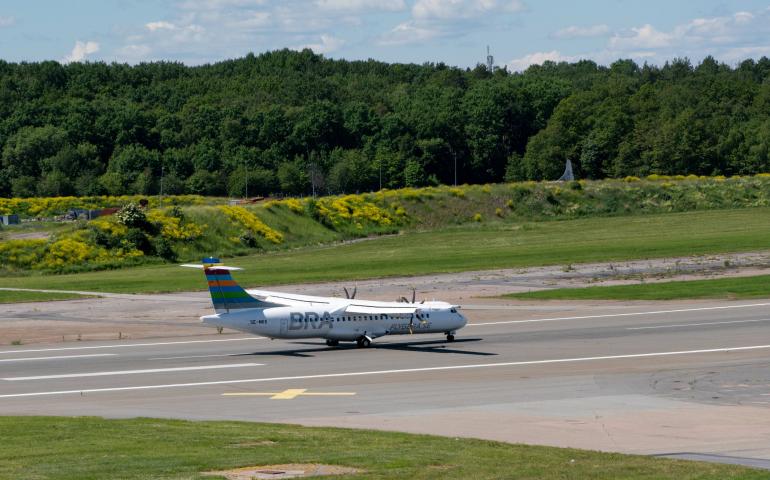
By Alastair Blanshard and Mekahl Vohra
Green finance has gained phenomenal momentum. In 2019, a record total of $257.7 billion of green bonds were issued globally, representing 51% growth from 2018. Despite the pandemic, this momentum has continued through 2020, with issuances of $69.4 billion in Q3—the highest ever recorded in any third quarter period. Equity markets have seen similar trends, with Morningstar recording inflows of $54.6 billion into sustainable funds in Q2 2020.
However, the definition of green finance has struggled to keep pace with this market growth. While the figures quoted here are from more rigorous classifications, some sources cite the sustainable investment market as over $30.7 trillion as far back as 2018. The differences typically stem from different scopes across environmental, social, and governance (ESG) criteria, and different requirements for transparency and impact.
Here we’ll focus on green debt instruments, their evolving classifications, and the resulting opportunities within aviation.
Green finance in aviation
The aviation industry progressed ahead of other sectors in agreeing to sustainability goals. The initial commitments to carbon-neutral growth from 2020 were established by the International Civil Aviation Organization in 2010—a full six years before the Paris Agreement was signed at COP21.
Since then, companies and organizations across aviation have only ratcheted up their commitments. Thirteen airlines in OneWorld and over 500 airports in ACI Europe have committed to net zero carbon emission by 2050, and many other companies targeting similar decarbonization trajectories.
Beyond the constant efforts to improve fuel efficiency and reduce emissions through fleet renewals, improved operations and infrastructure, other initiatives are gaining momentum. Ground equipment is becoming electrified, sustainable aviation fuels are moving from trials to commercial production, and electric propulsion is becoming a practical reality.
Accelerating these efforts to achieve the targets that airlines and airports are committing to will require vast capital. The Energy Transitions Commission (ETC) estimates the abatement cost for aviation as approximately $170 per metric ton of CO2. When applied to the sector’s 2019 emissions, this suggests an industry cost of over $155 billion, equivalent to over 7 years of total industry profits.
Use of green finance can help the industry to obtain this capital. As shown in the following table, green finance offers an assortment of reputational, diversification, and potential yield benefits (a “greenium”). The reputational benefits are perhaps particularly supportive to aviation, as the only one of the six sectors defined by the ETC as “hard to abate” that is directly customer facing.
Despite this, aviation has seen very little use of green finance. This is a supply problem, with considerable latent demand from sustainable investors keen to diversify their portfolios. However, many of the current classification systems have traditionally required the projects funded by the capital to align with the Paris Agreement, which is complicated by the unclear decarbonization trajectory for aviation.
As a result, most green finance issuances in aviation have been by airports, using existing frameworks to issue debt to fund cleaner buildings, electric vehicles, and climate change adaption.
Swedavia AB, a major airport operator in Sweden, issued a $118 million green bond with a 5.25-year maturity in 2019 to fund projects addressing climate change and sustainability. This used a framework developed by SEB and Swedbank, which aligns with the 2018 Green Bond Principles (GBP) defined by the International Capital Market Association.
This framework has also been used by subsequent issuances, most recently for the issuance of a $910 million green bond by the Royal Schiphol Group, specifically to finance clean transportation and sustainable buildings at Amsterdam and other airports it operates around the Netherlands. However, while the 2018 GBP defines eligible green project categories ranging from green buildings to clean transportation and renewable energy, it does not cover aviation assets and is therefore only useful for a limited number of opportunities.
Green alternatives
Sustainability-linked instruments are a potential alternative that could be utilized by airlines. These provide much more flexibility in how the proceeds are used, based on a two-way pricing mechanism. If the airlines achieve pre-determined ESG targets, the coupon payments decrease; if they fall short, they increase.
A recent example is the $600 million, 5-year Transition Sukuk (Islamic bond) issued by Etihad Airways in October 2020. The coupon payments depend on Etihad achieving a reduction in total CO2 emissions of 17.8% compared to 2017 levels in its fleet, by using the proceeds to finance fuel-efficient next-generation aircraft and sustainable aviation fuels. Should Etihad fail to meet this CO2 emission target, which for now seems unlikely (due to a fleet re-structure in 2017 that has already led to a ~10% reduction in Available Seat Kilometers by 2019, and the impact of COVID-19 this year), carbon offset purchase penalties worth 5-25 base points above its CORSIA commitment would apply.
While the deal has received praise for being the first issuance in global aviation under a Transition Finance Framework, Vigeo Eiris (a sustainability research group recently acquired by Moody’s) has taken a more conservative view stating the framework’s contribution to be “limited” as a result of Etihad’s targets not aligning with the goals of the Paris Agreement. Despite this, Vigeo Eiris has referred to the initiative as “robust,” potentially laying the foundations for other airlines to follow suit.
In February 2020, the aviation industry saw a sustainability-linked loan, which was an amendment to JetBlue’s existing $550 million senior secured Revolving Credit Facility (RCF). With BNP Paribas acting as the structuring agent, the deal was made as part of an effort by JetBlue to reduce its carbon footprint and improve its community relations. Similar to the Etihad deal, there is a pricing mechanism in place in which the interest rate paid on the RCF will increase or decrease based on JetBlue’s ESG-linked score determined by Vigeo Eiris.
While target-based instruments do present relevant opportunities in aviation, they also present a conflict of incentives. While the airline is rewarded for achieving the embedded targets, the investor is conversely rewarded when the targets are failed. In extreme cases, investors could seek higher returns by selectively investing in issuances likely to fall short of targets.
The urgent need for improved regulation
Ultimately, the environmental value of green finance is only as robust as the classification, measurement, and transparency of the physical impacts. Without these, the use of green finance remains exposed to accusations of greenwashing, and efforts to improve them will be crucial over the immediate years.
The EU Taxonomy Regulation—a classification tool soon to be rolled out—seeks to ensure planning and reporting is aligned with the EU’s environmental objectives and prevent greenwashing. The EU Platform on sustainable finance has laid out a set of global criteria to determine which financial products can be marketed as “green” to investors. This is expected to soon be extended to cover some parts of the aviation industry.
The field of transition finance is also rapidly developing. CBI recently published a whitepaper laying the foundations for Transition Bonds, which will allow debt to be issued for projects that will enable progress toward the Paris targets but do not themselves align with the targets. However, this is only appropriate for sectors that can demonstrate credible potential to achieve net zero. Despite efforts such as the ATAG 2050 Waypoint report, this is still an open topic for aviation—and particularly for long-haul travel.
Technology is also supporting other developments in green finance, such as the proposed use of blockchain to increase the traceability of green assets.
The outlook for green finance in aviation
The continued importance of sustainability for aviation will accelerate the requirement for capital to develop new technologies, infrastructure, and fuels. While the rate difference between green bonds and traditional vanilla bonds is not significant enough to incentivize borrowers to shift to raising money via green bonds, the reputational and diversification benefits will likely tip the balance in the favor of green issuances.
Airports can already make use of green finance for sustainable infrastructure projects, and we expect their use to increase as the industry focuses on a green recovery from COVID-19. Airlines face greater challenges. While the current definition of green bonds eludes airlines, transition bonds and ESG-linked instruments may provide alternatives.
We believe that more airlines will follow the ground-breaking issuances by Etihad and JetBlue. The expansion of the EU Taxonomy to cover aviation will go a long way to legitimize the sectors’ use of green finance, as will work by other organizations (such as rating agencies) to further assess and define “green” directives.
Until these definitions are mature, the use of green finance in aviation will need to tread a narrow path to ensure the reputational benefits are backed up with tangible progress towards sustainability targets, or risk miring the benefits with accusations of greenwashing. We believe that as the classifications are refined and accepted by the wider investment community, we will see accelerated use of green finance in aviation, helping fuel the necessary investments to decarbonize the sector.





Facebook comments